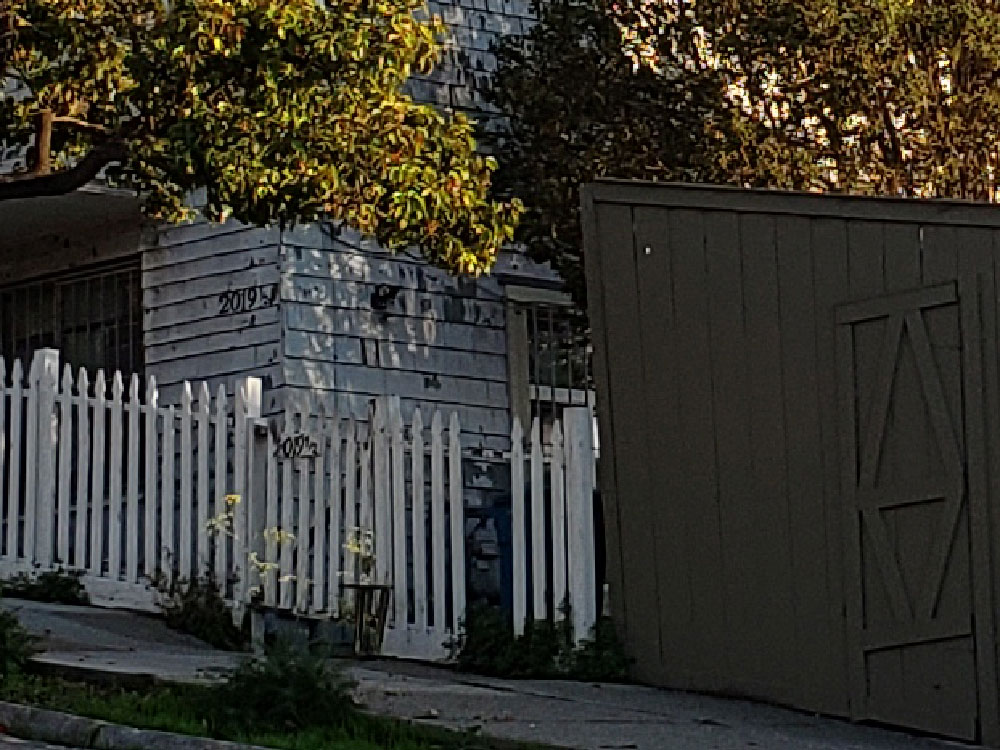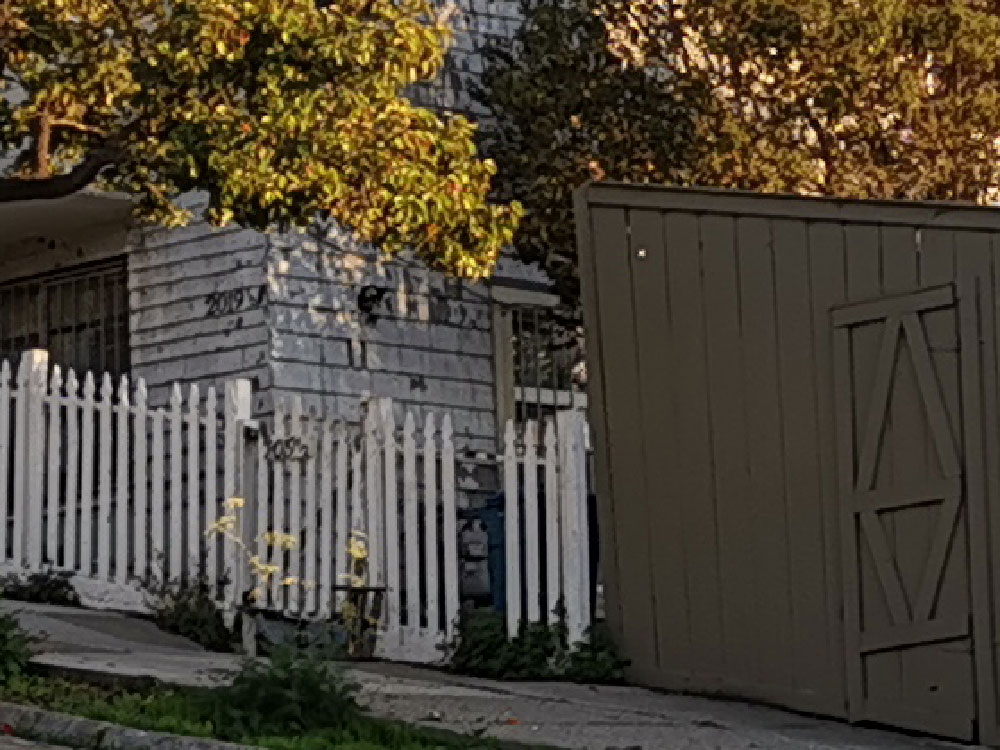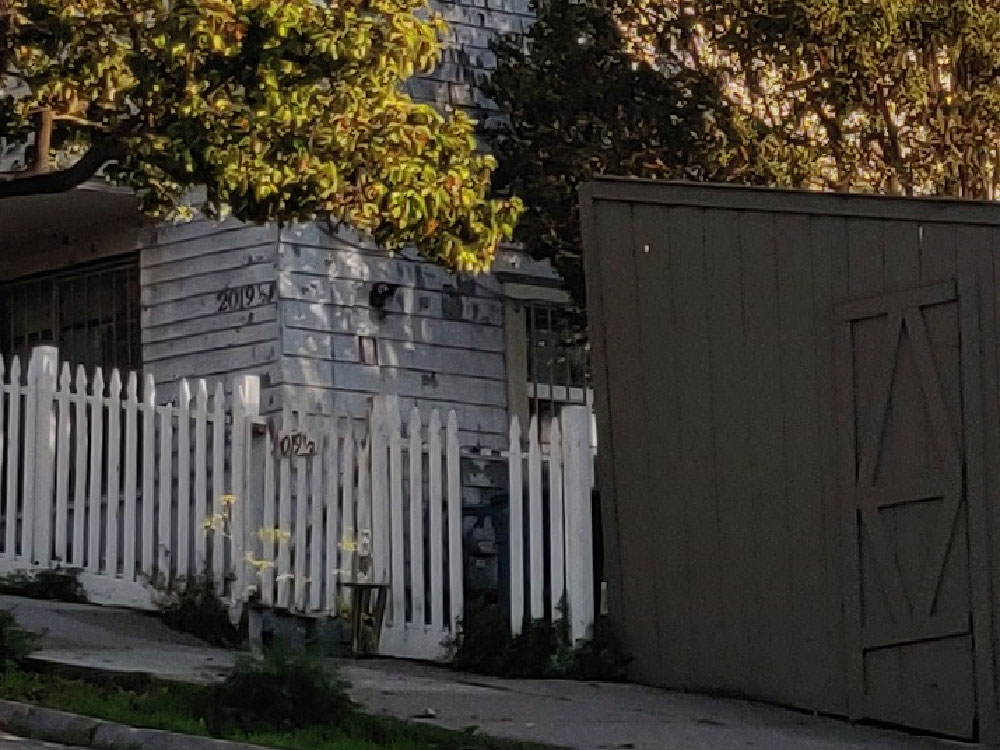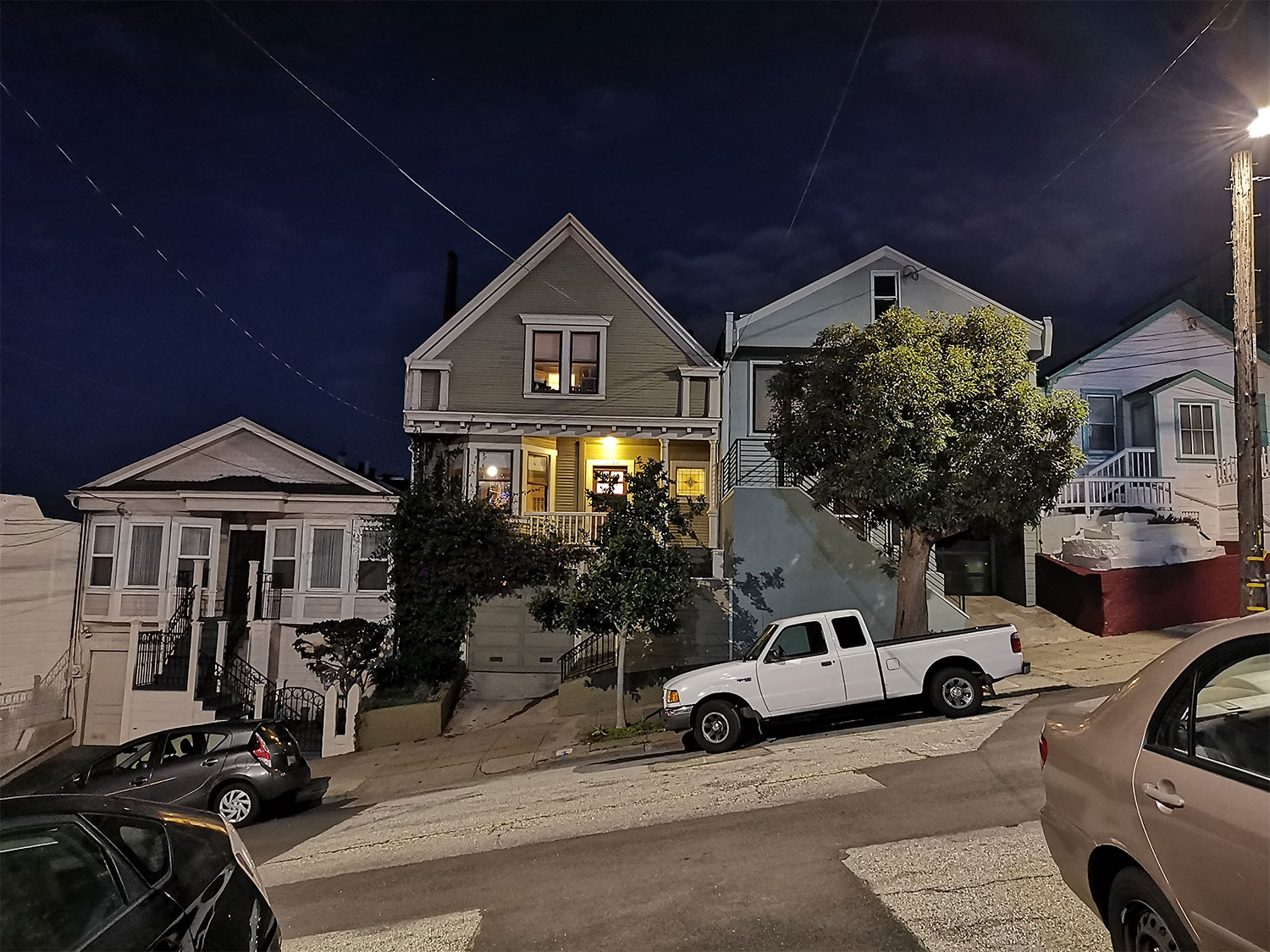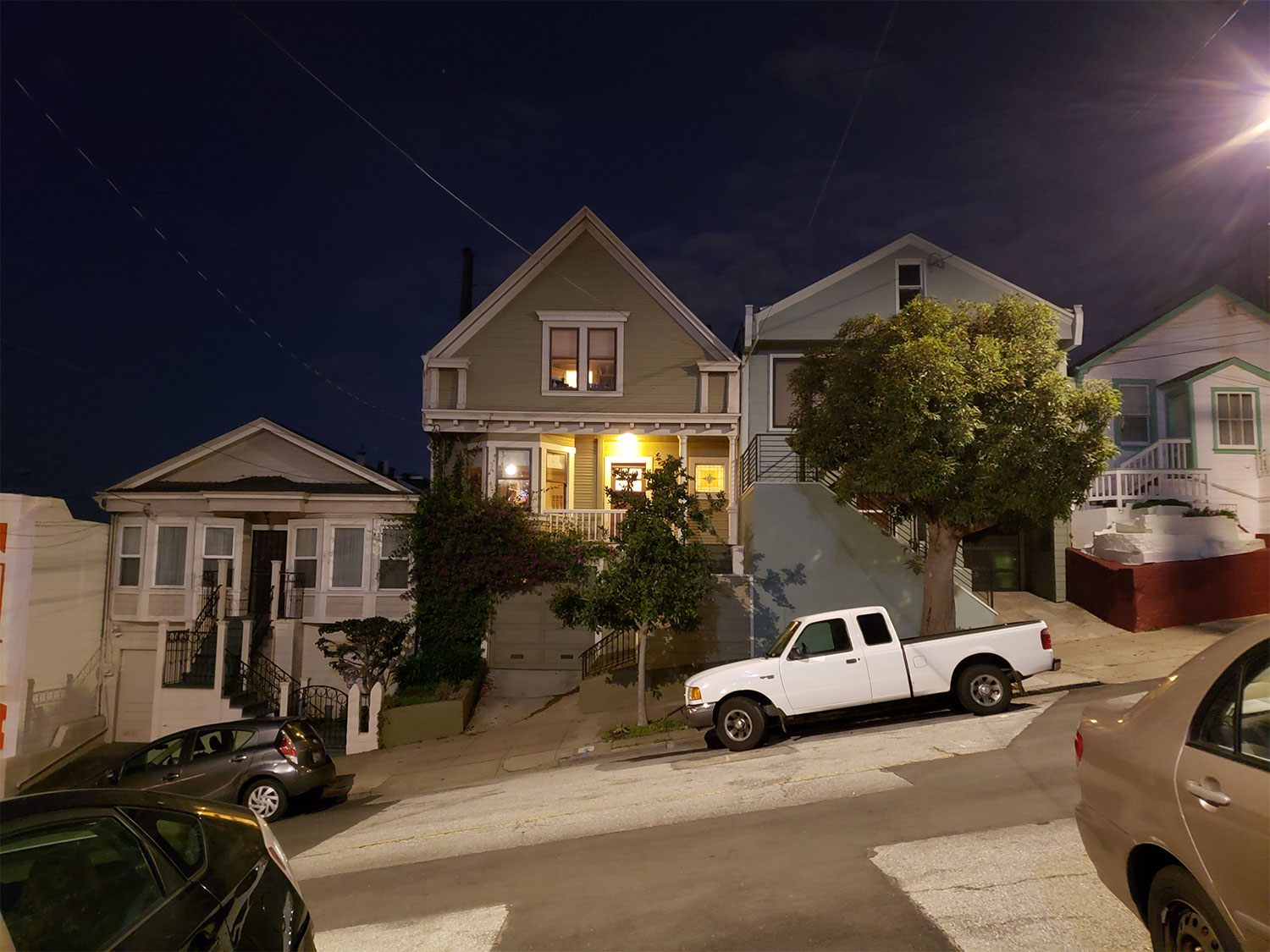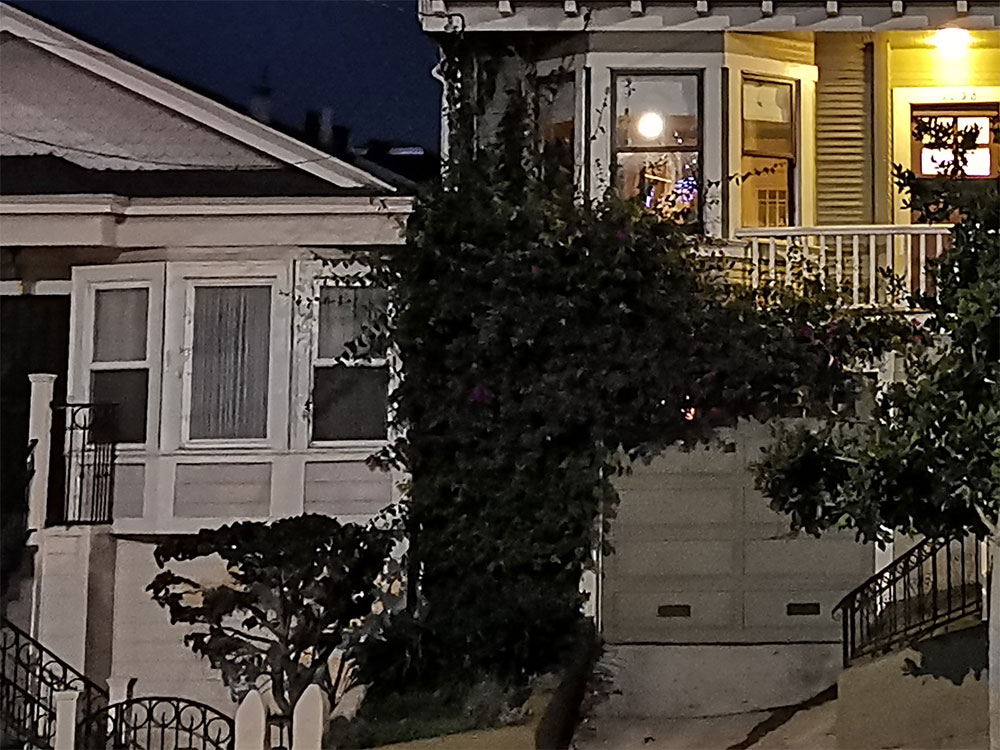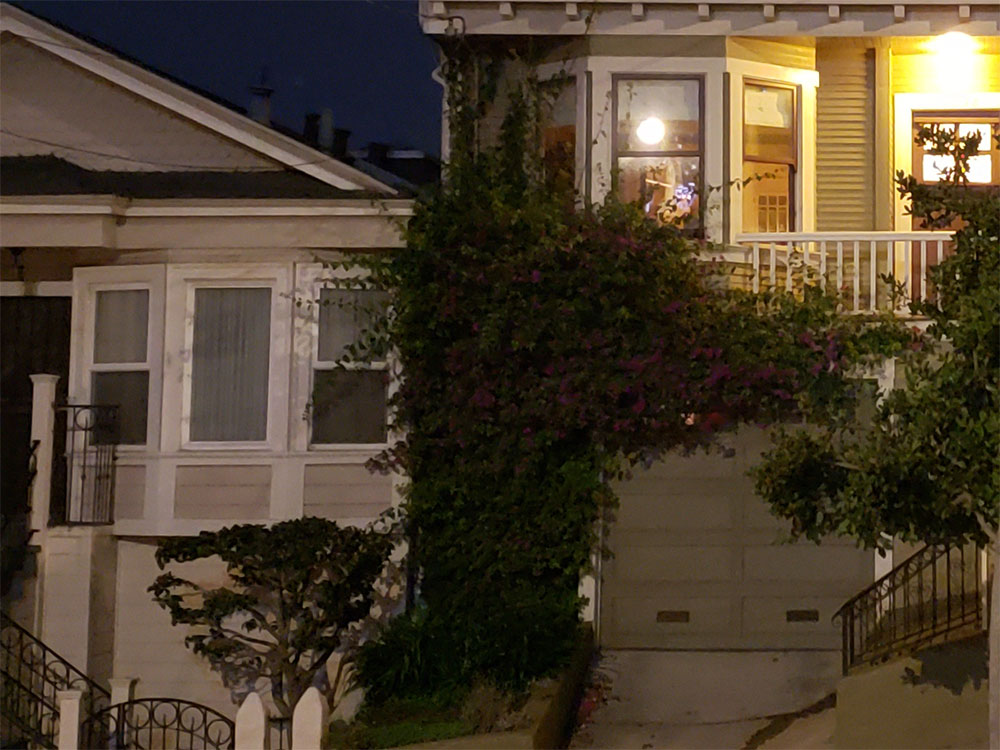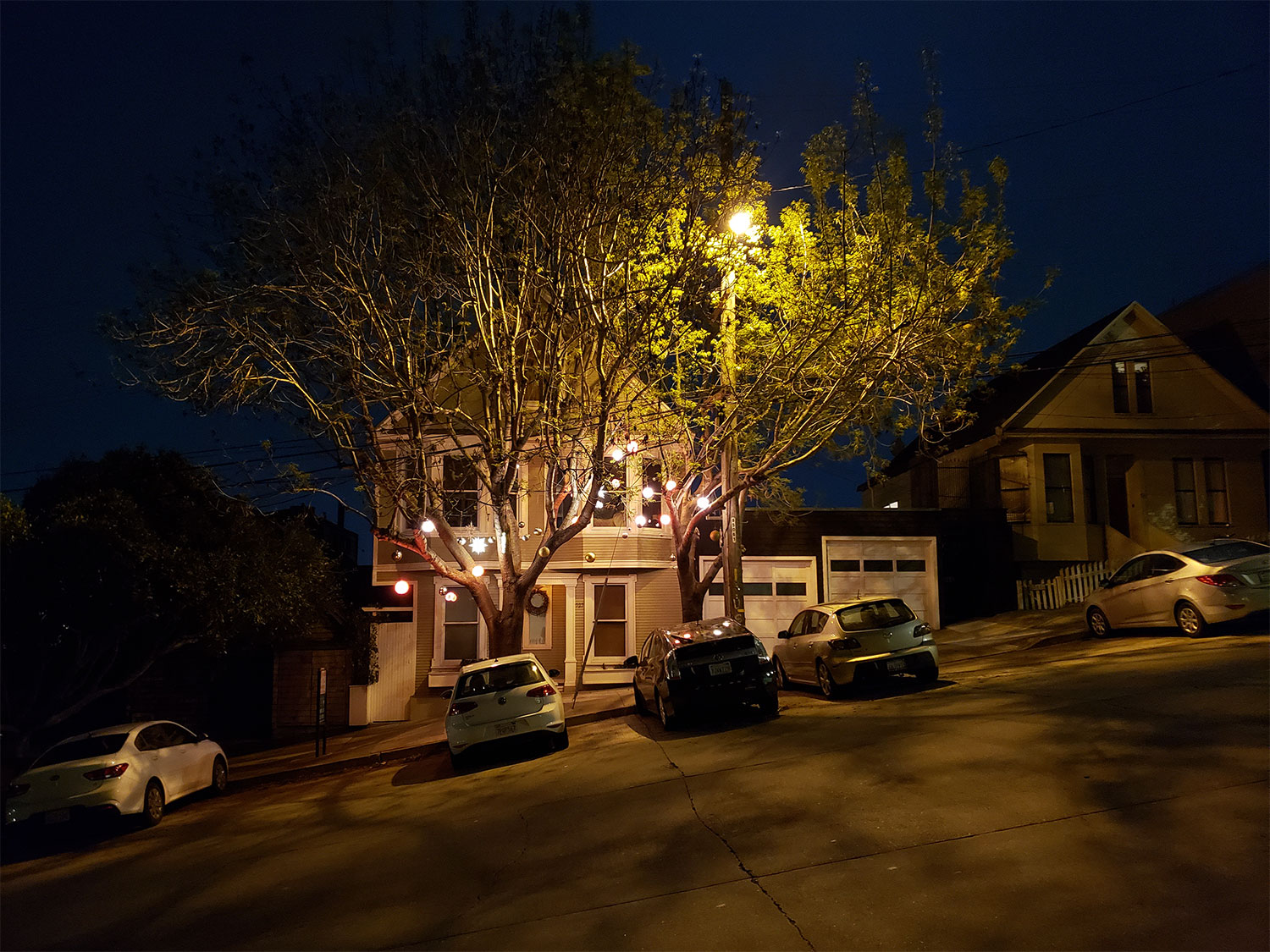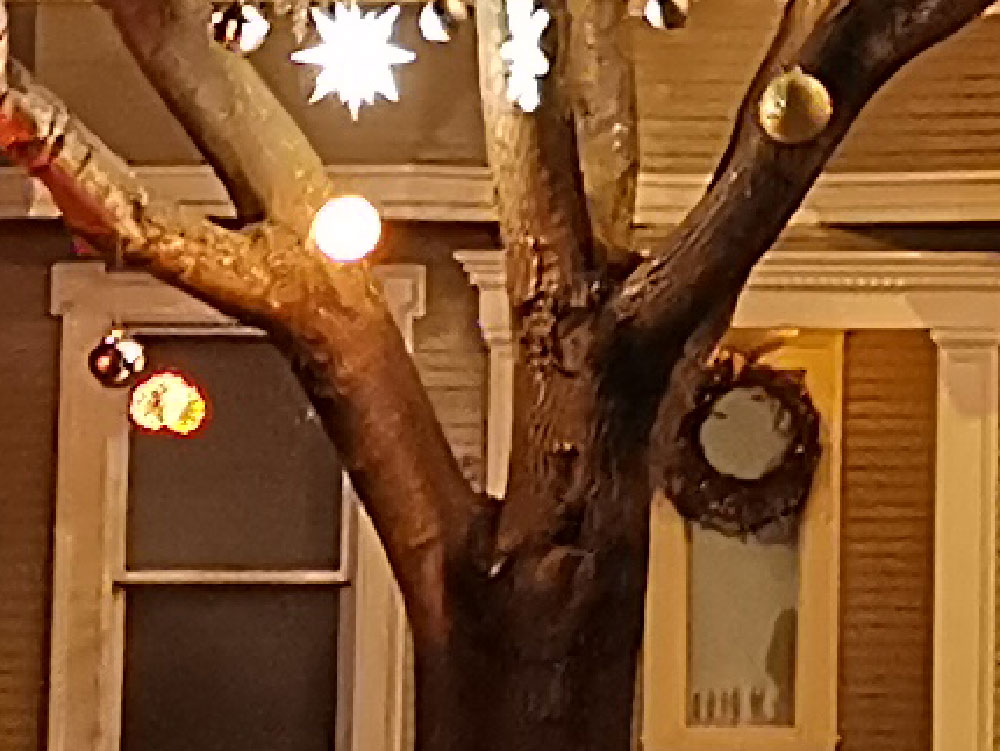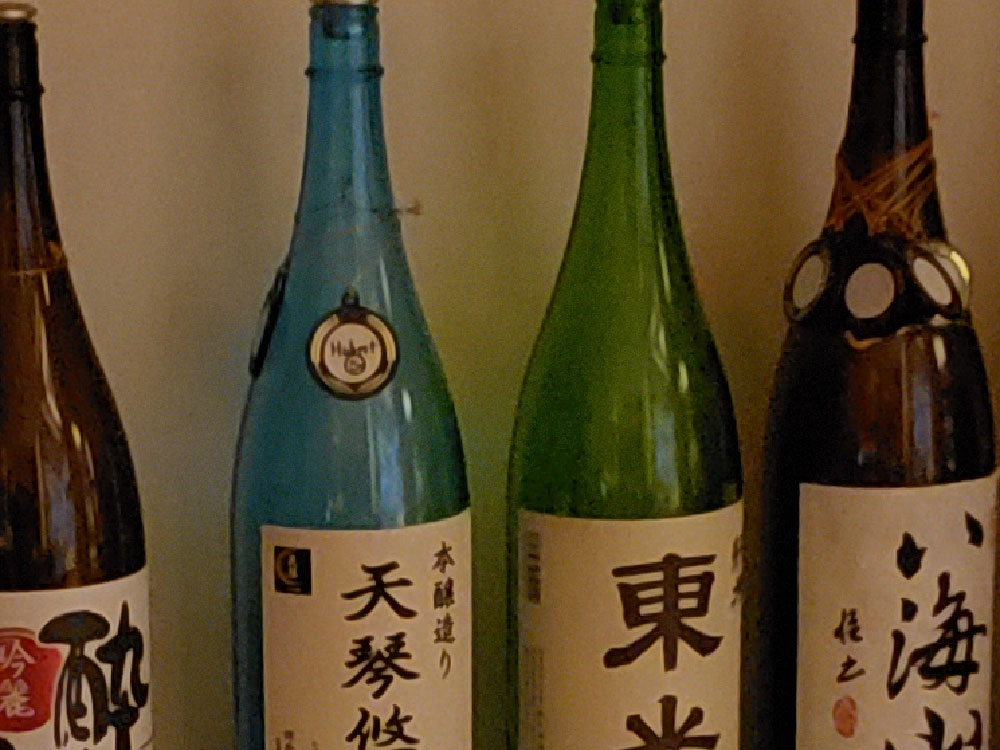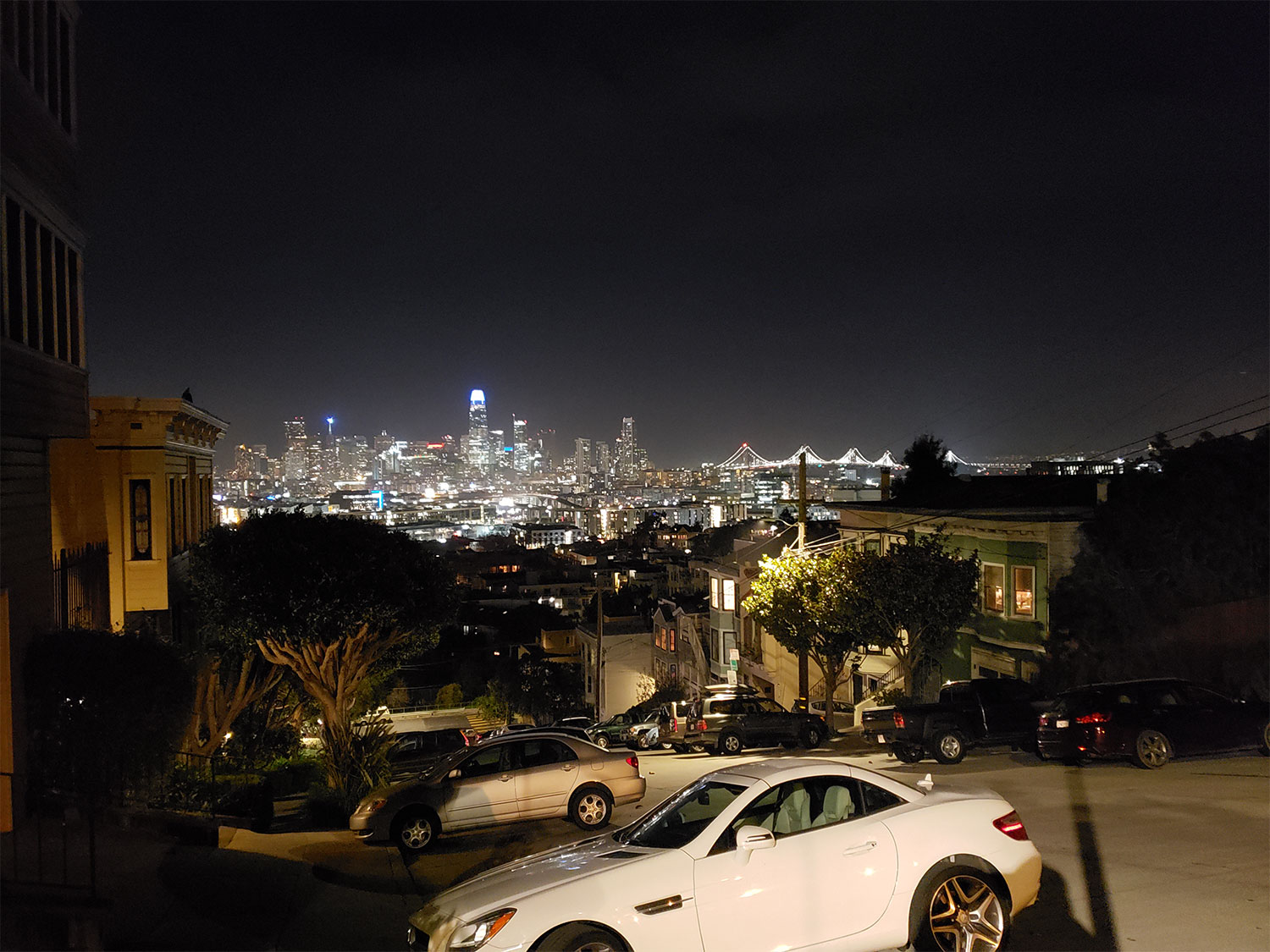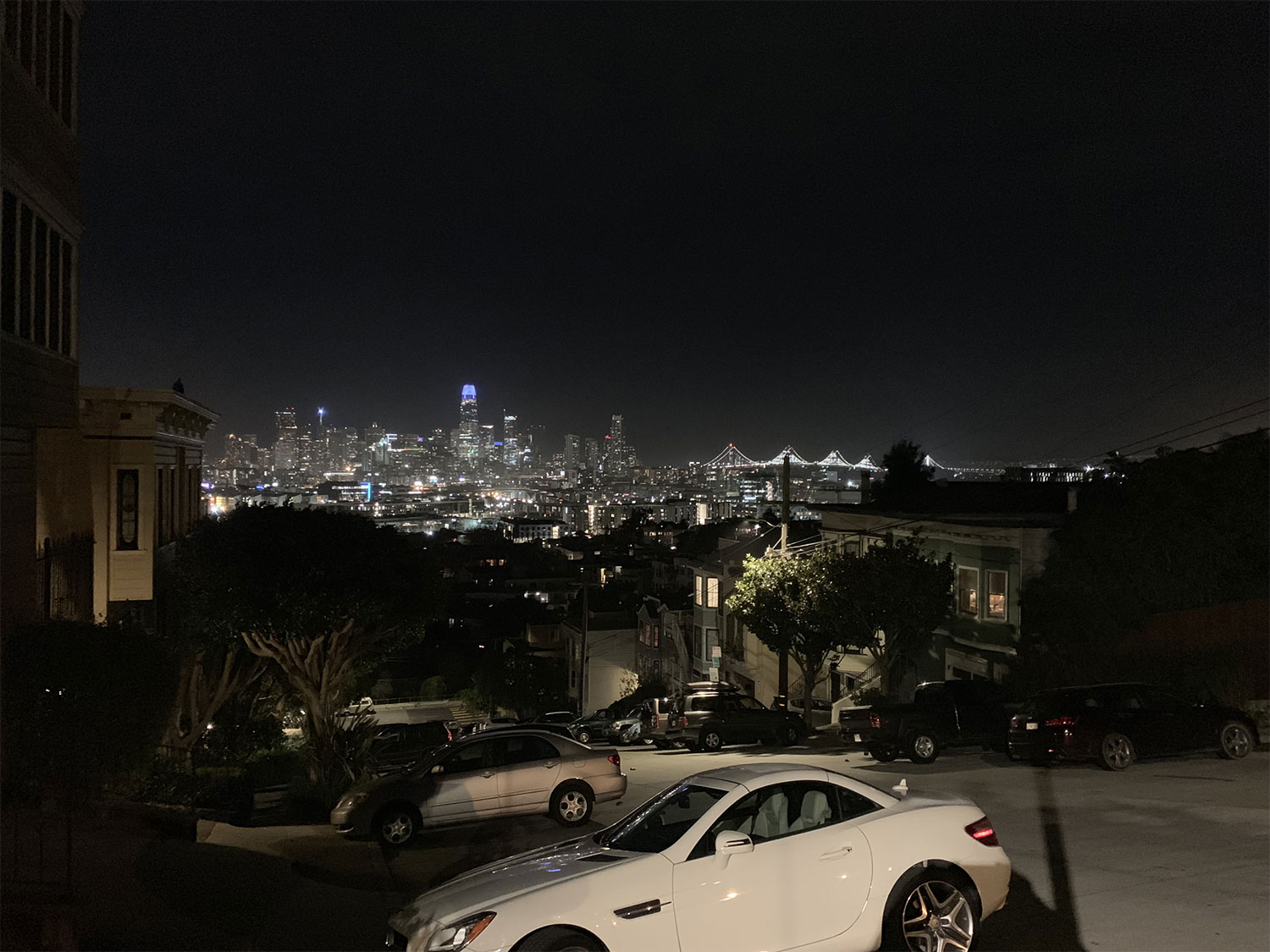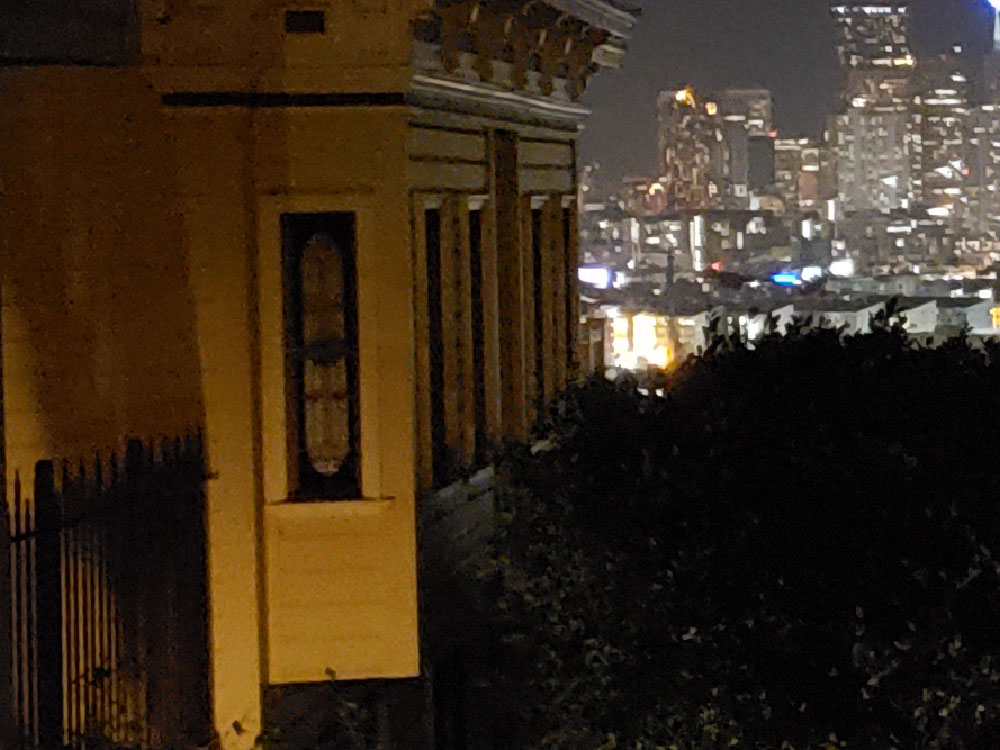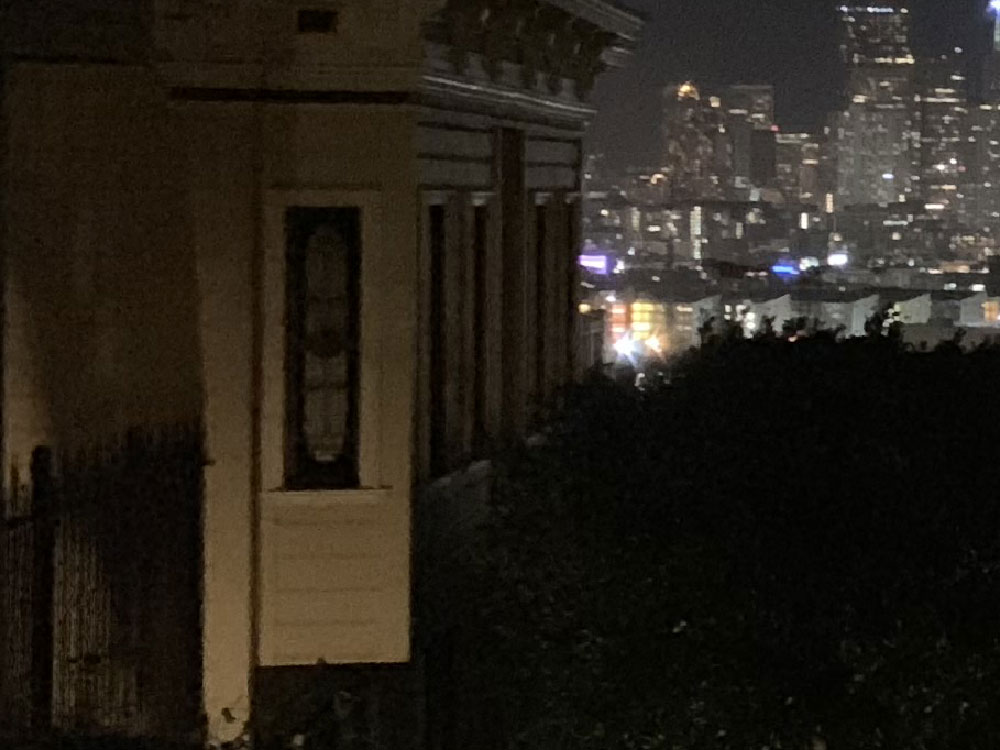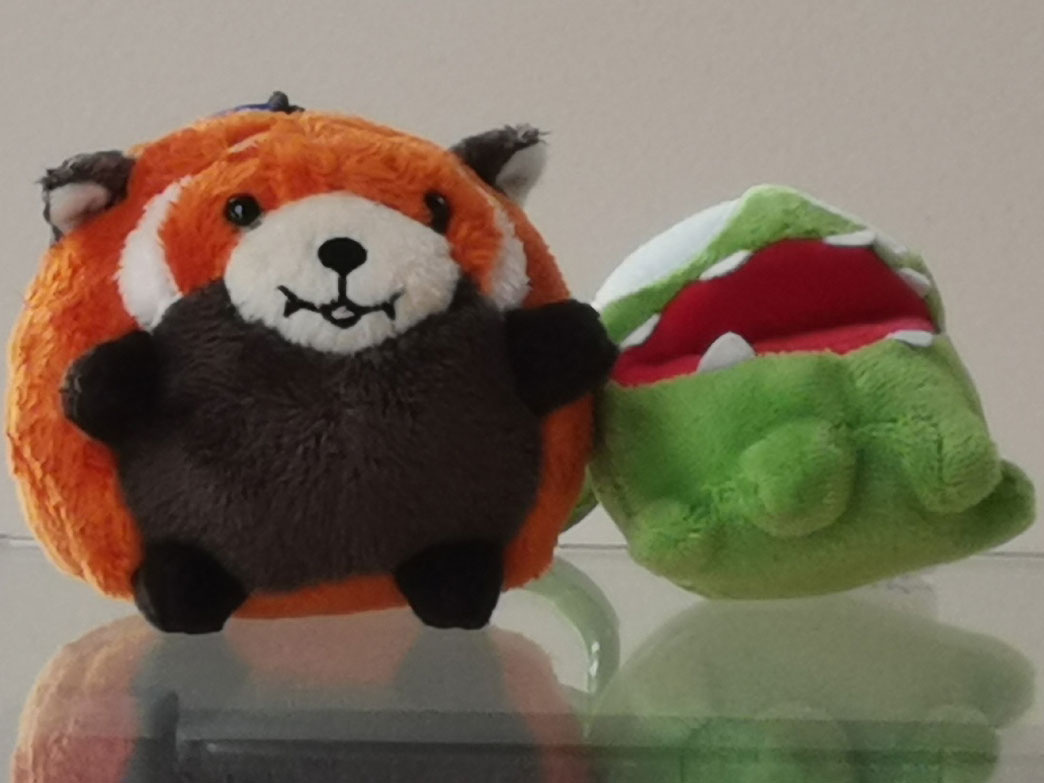
Ahead of the Galaxy S10 launch, let’s see where today’s top Samsung Mobile Camera stands. The comparison will be interesting in the coming days. In this review, we will provide a quick overview of the hardware capabilities and check what the actual image quality is. Note that we’re reviewing the camera of Snapdragon-based model. For the rest of the phone, you can read our Galaxy Note 9 smartphone review to learn about the rest of the phone.
Learn more: what is our Camera IQ score?
Key Camera specs and Uber HW Score
- Rear Camera System (2 cameras)
- Primary: 27mm focal length, f/1.5-2.4 aperture, 12 Megapixel, Dual-Pixel Phase Detection AF, OIS
- Secondary: 52mm focal length, f/2.4 aperture, 12 Megapixel, Fixed-focus, OIS
- Ultrawide: N/A
The Galaxy Note 9 has a dual-camera setup which has become a standard baseline at the high-end of the market. The camera is nearly identical to the Samsung Galaxy S9+, but the Galaxy Note 9 did get a noticeable tuning update that improved its HDR image quality. The primary camera has a unique dual aperture system.
From a hardware standpoint, both the Galaxy S9+ and the Galaxy Note 9 achieve a very high Camera HW score. That is today’s second-highest score and was the highest score when the S9+ was launched one year ago.
Learn more: what is our camera hardware score?
Image Quality Analysis
Important: let’s clarify some terminology we’ll be using:
- “image processing”: software work that improves the image data quality
- “image filtering”: software work that changes the style (aesthetic) of the photo.
- “context photo”: a great approximation of what we see
- Including how dark the scene actually is
- Only to provide the context of the shot.
- Not a quality benchmark
A note about the Uber IQ Camerascore: our camera scoring system is based on four “Pillars” or sub-scores that provides much-needed nuance: day, night, zoom and ultrawide photography.
Daylight photography: 186
As a high-end smartphone, the Galaxy Note 9 takes outstanding pictures, but we can push the envelope to see how it scores when compared to the best out there.

Context Shot
In this scene, the Galaxy Note 9 did quite well, but we did notice some over-exposed areas such as the street sign, and some parts of the wall which is getting lit by the Sun. That aside, the Galaxy Note 9 did well when it comes to HDR, capturing the details in the shadowed areas in a natural and agreeable manner, without using too much filtering.
When compared to other handsets, the Galaxy Note 9 often produces sharper images than the Huawei Mate 20 Pro, but it can be challenged and slightly surpassed by the iPhone XS or the OnePlus 6T in our tests. The daylight image quality remains very close to other high-end phones.
The Galaxy Note 9 photos are very consistent with what the user is looking at, although we did notice that the color hues can sometimes be warmer than the scene actually is. This is probably a tuning style that can be observed in the Samsung series 9. This decision is likely deliberate and thought out. We will talk about OEM filtering strategies in an upcoming article.
Although Samsung does use image filtering to accentuate sharpness, it doesn’t do so in a systematic way by adding ringing around objects that don’t need to be further sharpened. We have seen other OEM make that mistake, which leads to the photo looking artificial.
The dual f/1.5 – f/2.4 aperture provides a way for Samsung to perform better in daylight and low-light. While f/1.5 is great in dim lighting, having a smaller aperture such as f/2.4 in very bright situations might improve the image sharpness.
Ideally, it would be best to have a variable aperture for intermediate cases because f/1.8 or f/2.2 could be better in some scenes, but with this particular setup, Samsung has managed to find an excellent trade-off.
Food photos are one of the Galaxy Note 9’s strength, with clear, sharp and well-saturated images that are ready for sharing, while looking relatively natural. Relatively is the key word here, because Samsung Galaxy phones tend to process the colors somewhat (saturation, warmth), but users don’t usually complain about over-processing. In that regards, the Note 9 photos are virtually identical to the Galaxy S9+
Night light photography: 193
This is what Samsung has been optimizing the primary camera for, thanks to its dual-aperture it can open to f/1.5 in dim lighting, so let’s see how effective it really is.
When it comes to low-light, don’t forget that brighter is not always better and that photo filtering destroys your photo data. Whenever possible, filter and save a copy.
The Note 9’s closest competitor for night photography is the Huawei Mate 20 Pro (don’t miss our Mate 20 Pro camera review), we had already compared that phone with the Note 9, and showed that Samsung’s phone could capture low-light photos with much better color and details. Check the cropped photos below.

Context shot: the scene looked like this
Both photos look quite good and you might notice that the Mate 20 Pro’s photo is less natural-looking and doesn’t capture some color hues as well. The image tends to be a bit more monochromatic. Let’s take a closer look.

Context shot, crop
Both cameras amplify the brightness, but the main difference is that the Galaxy Note 9 captures color hues and details much better. The context photo, if brightened would look much closer to the Samsung photo. This is very representative of “why” the Galaxy S9/S9+ and Note 9 dominate low-light photography, and it’s very noticeable if you care to look closely.

Context Shot, what the scene looks like
In the scene above, the Mate 20 Pro photo can, fortunately, be filtered back to a more natural state, but when zooming in, the Galaxy Note 9 reveals details more consistently. This is particularly visible on the branches wood detail, and the house’s siding.

Context shot: what the scene looks like
This scene is also a good representation of the Galaxy Note 9’s performance in what is a challenging night shot. But you might be curious about how it stacks up to the Google Pixel 3, and the iPhone XS.
The Pixel 3 represents a pretty big improvement from Pixel 2, and given that its primary camera virtually has the same spec as Pixel 2, we can deduct that Pixel 3 is mostly a camera software feat. However, Software can only help so much, and Pixel 3 images often don’t stand up to a close-up inspection when facing the Galaxy Note 9.

Context Shot
In very dim lighting conditions, the Pixel 3 low-light image quality will very often display softer details, and higher, more visible noise levels. This is not always obvious on a ~6-inch 2K screen, but when looking at photos on a PC, it’s much more noticeable. We found this to be quite consistent in low-light scenes.

Context Shot
The iPhone XS is a different beast, and while it captures very decent low-light photos, the color quality can’t keep up with the Galaxy Note 9. Apple is known for its natural, non-flashy photo style, and we think it’s great. However, cameras should ideally capture the tones that are visible to the eye, and the XS photos often seem a bit dull for that reason.
Yes, the colors can be boosted via image filtering. However, because the color proportion distribution was not captured very well, inflating them via filter is only a partial fix. You could do much more with a PC software, but it’s usually not acceptable for a phone user.

Context Shot
In this scene, the Pixel 3 overly exaggerated the color saturation, which it does frequently as part of its filtering style. However, it overshoots and the reason is that the original color capture was probably not as good as the Note 9, and there was an attempt to artificially boost it. You can also see a much higher noise level in the sky, even on a resized photo.
To the Pixel 3 credit, the exposure management of the city is better, even with the unnatural colors. This is where Google’s massive reliance on multiframe HDR pays off, as where Apple seems under-exposed and Samsung doesn’t have enough HDR frames to cover the dynamic range of the city.

Context Shot, Crop
The Note 9’s low-light performance is remarkable because it doesn’t use the biggest sensor, but the Samsung engineers have crafted a fantastic camera that makes the best of every bit of hardware it has (large sensors aren’t always used optimally) coupled with an impressive camera tuning. That said, Samsung needs to do better with exposure.
"SAMSUNG ENGINEERS HAVE CRAFTED A FANTASTIC CAMERA"It is worth pointing that we would like to see a long-exposure mode, which is 100% software because that would cater to a small but increasingly popular use case.
Zoom photography: 88

Context shot, what the scene looks like when zoomed in
Equipped with a 2X optical zoom (52mm, 35mm-equivalent), the Galaxy Note 9 can snap sharper pictures than single-lens camera systems. In a preview review, we have already proven that the Note 9 cannot touch the Huawei Mate 20 Pro and P20 Pro in a zoom context. However, we found the iPhone XS to be the closest competitor, with comparable performance.
See how the “warm color” tendency of the Galaxy Note 9 is pushed to the max, possibly because of the orange tone of the fox… It’s very easy to correct, but we left it to illustrate the unintended consequences of filtering styles…
It was also very insightful to see how the Pixel 3 and its very clever zoom algorithm would stand up to an optical zoom. The result was without appeal: while Google does very well with its image processing, it cannot surpass a 2X optical zoom.
It’s not completely surprising, but it’s good to see the actual difference which shows the upper-limit of such algorithms which retain their value because they are applicable to 2X or 3X zoom lenses as well. Kudos to Google for that, but Pixel users would love getting an optical zoom too.
And to remind you that the lens isn’t everything, The iPhone 7 Plus is also a good example of a phone that has a 2X optical zoom but paired with a less performing sensor and older software.

Context Shot, we’re going to zoom on the street art
Ultrawide photo quality: N/A
Unfortunately, the Galaxy Note 9 does not have an ultrawide (~16mm) lens, which is a pity because that’s a wonderful capability to have, but from everything we’ve seen leak about the Galaxy S10, it seems like Samsung will solve this – and we are looking forward to evaluating it.
We called ultrawide cameras an “an amazing differentiator” in 2016 when the LG G5 came out, and in our Galaxy S8 review (2017), we said, “not sure how long Samsung can abstain from adding that [ultrawide camera].” It will finally happen in 2019.
Conclusion and Uber IQ Camera Score
Based on the analysis of these images and many more, our algorithm did output an Uber IQ Camera score of 162 for the Galaxy Note 9, making it the third most powerful camera configuration on the market, and the best dual-lens smartphone camera.
Learn more: what is our Camera IQ score, and full rankings
| Uber IQ Camera | Sub-scores |
|---|---|
| Day | 186 |
| Night | 193 |
| Zoom | 88 |
| Ultrawide | N/A |
The data shows that the Samsung Galaxy Note 9 is the best low-light smartphone camera on the market, producing natural-looking photos with excellent data quality. For many users, low-light is where the real battleground is. Samsung uses much less filtering than its near competitors to produce photos, which can be filtered later to fit the exact style desired by the user.
This gives Note 9 photographer much more creative options when compared to handsets that already have a prominent built-in image filtering style.
"THE BEST LOW-LIGHT SMARTPHONE CAMERA"If you look at the Uber IQ Camera scores, you can also see that the Galaxy S9 and S9+ are the two next best low-light cameras, which is not surprising given that they were built on the same platform. The Galaxy Note 9 is a bit better when it comes to image quality, seemingly thanks to a software update – we’ll try to find the time to highlight these differences later.
In conclusion, the Samsung Galaxy Note 9 is also one of the best smartphone cameras, including in daylight. It may lack the versatility of the Mate 20 Pro or the LG V40, but it provides excellent image quality for today’s most common use cases: day and night photography. You can also read our complete review of the Galaxy Note 9 smartphone.
More in-depth mobile camera reviews are coming, so connect with us on Instagram, Facebook, and YouTube to be notified of new scores, and more. For the latest handset reviews and news, add us to your Google News by clicking on the “Follow” button there. Thanks for your interest!
Filed in . Read more about Camera Benchmarks, Mobile Camera Reviews, Samsung and Samsung Reviews.
